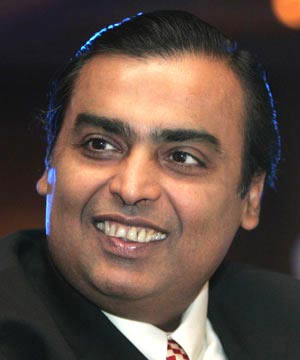 London, Nov 7: India has more number of billionaires than France, Saudi Arabia, Switzerland and Hong Kong and is home to the sixth largest group of super rich population in the world, says a report.
London, Nov 7: India has more number of billionaires than France, Saudi Arabia, Switzerland and Hong Kong and is home to the sixth largest group of super rich population in the world, says a report.
Moreover, the country's financial capital Mumbai with 30 billionaire, is among the top 5 'billionaire cities' globally, which was topped by New York that is home to 96 billionaires.
Hong Kong, Moscow and London make the top five with 75, 74 and 67 billionaires respectively.Notwithstanding the number of billionaires in India having decreased between July, 2012 and June, 2013, India still enjoys a decent 6th position in the top 10 league with 103 billionaires.
This list was topped by United States with 515 ultra-rich people, three times more than in China, which ranks second with 157 billionaires.
Germany, United Kingdom and Russia make the top five countries with a billionaire population of 148, 135 and 108 respectively.
According to the the wealth-X and UBS billionaire census report 2013, India's billionaire population has decreased by 5.5 per cent to 103 and the total billionaire wealth has fallen by USD 10 billion to USD 180 billion.
However, the world's population of billionaires continues to grow. Between July 2012 and June 2013, the number of billionaires has increased by 0.5 per cent, with their total wealth rising by 5.3 per cent.
Globally, there are 2,170 billionaires as of 2013, with a combined net worth of USD 6.5 trillion, more than the GDP of every country except the United States and China.
The report further noted that industrial conglomerates and pharmaceuticals are the first and second most significant industries for Indian billionaires.






Comments
Add new comment